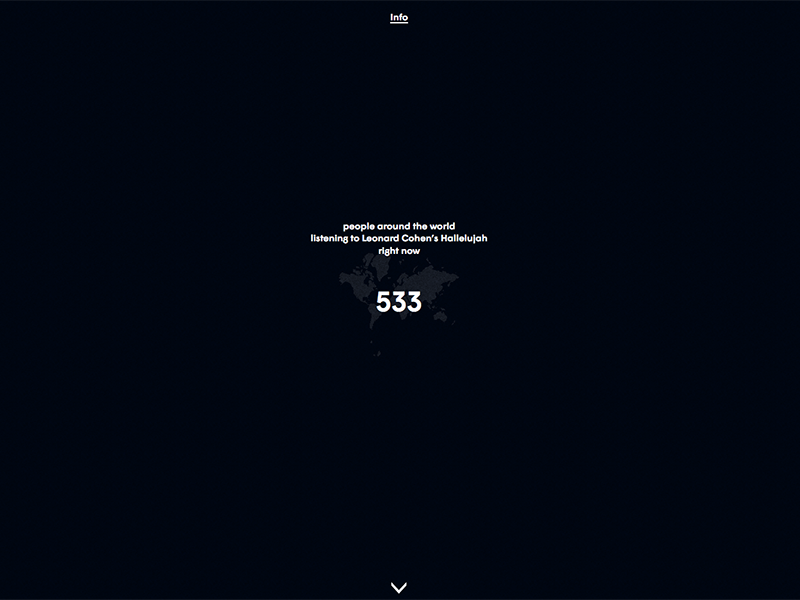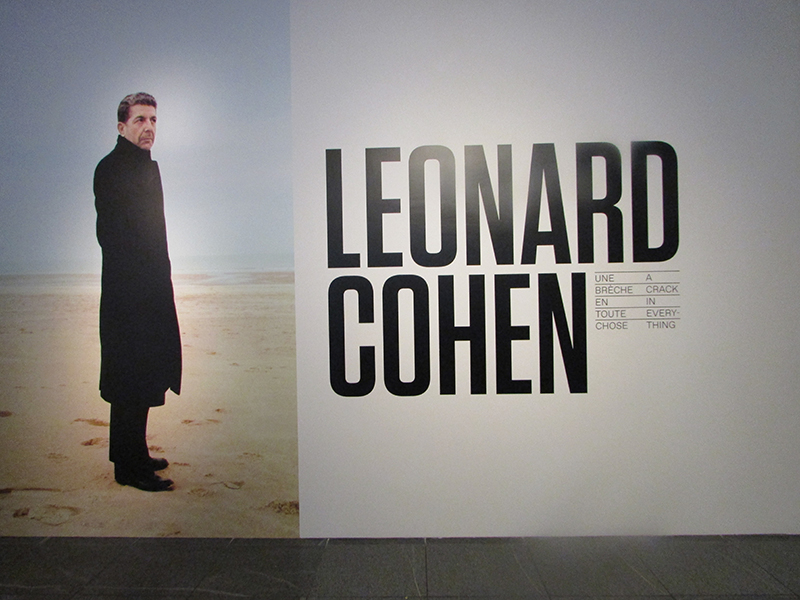One year after his death, artists from around the world have reinterpreted Leonard Cohen’s legacy, in ways that would surely astonish, maybe even embarrass, a man who wore celebrity lightly.
Leonard Cohen: A Crack in Everything (a lyric from his song, Anthem), which opened at the Musée d’art contemporain de Montréal (MAC) on Nov. 9 and continues for five months, is an overflowing buffet of the sights and sounds of the beloved Montreal-born troubadour.
As MAC director and chief curator John Zeppetelli said, it was never intended as a “sycophantic exercise,” or a elegy in the conventional sense. Work began on the project three years ago and the concept had Cohen’s approval, he said. Or, at least, Cohen assented to not being “an obstacle.”
As his agent, Robert Kory, recalls, Cohen added, “But tell them I won’t be at the opening,” which sadly came true in a way he surely didn’t intend. His children, Adam and Lorca, however, have co-operated with the project.
READ: LEONARD COHEN’S SON SAYS MONTREAL CONCERT ACCORDS WITH FATHER’S WISHES
“The exhibition began as an ardent celebration of a universally acclaimed Montrealer, but has evolved into a more solemn and commemorative experience,” guest co-curator Victor Shiffman said.
The 40 artists from 10 countries, whose 20 commissioned works are on display, were asked to create something original that’s inspired by Cohen’s music, prose and persona, but they otherwise had a free hand.
As this is a contemporary art museum, visitors should expect the offbeat. Nostalgic fans will not be disappointed, as they are swept away by the centrepiece – a huge, three-walled video projection of clips of Cohen concerts and interviews over five decades that was put together by Montrealer George Fok.
Each installation is an exhibition in itself, a sensuous, immersive experience through music and video, taken to a whole new level by technological wizardry. Visitors walk through a warren of darkened, closed-off rooms, to view and hear each work in its own environment.

Israeli filmmaker Ari Folman, who’s best known for the animated Waltz with Bashir, has put his cinematic talent and personal memory to use in Depression Chamber. Folman, 55, said that when he was a child, his teenage sister, who had recently been dumped by her boyfriend, spent weeks holed up in her small bedroom, playing the singer-songwriter’s first album, Songs of Leonard Cohen, over and over.
“The years passed, but Leonard Cohen remained forever associated in my mind with an all-embracing, protective, sweet melancholy,” he explained. (His sister turned out fine.)
Visitors enter the tiny chamber, one at a time, where, in the blackened space, they can see their supine image projected onto the ceiling, as Cohen’s Famous Blue Raincoat – his most depressing song, in Folman’s opinion – plays in the background.
The collective Daily Tous les Jours has created a studio where visitors can pick up a microphone and hum along to Hallelujah, causing the floor to vibrate. They are connected live to listeners around the globe, through the website, asecretchord.com, a one-song Internet radio station that allows anyone, anywhere to join in a universal love-in. The number of concurrent listeners is displayed to all who are visiting the site.

Montreal choreographer Clara Furey provides a more low-tech tribute, with her solo dance performance. Appearing topless, Furey silently meditates on mortality – a dominant theme in Cohen’s later work.
Chicago-based Michael Rakowitz’s contribution uses video and archival objects to look at Cohen, in the context of “the ethical crisis of the post-Holocaust Jew in relation to Israel, Palestine and the greater Middle East.”
Rakowitz, who is of Iraqi-Jewish origin, observes that Cohen was revered in both the Israeli and Arab worlds. His poetry was even translated into Farsi in Iran.
The video was filmed at the Alhambra Palace Hotel in Ramallah, on the West Bank, where Cohen was supposed to have given a concert in 2009, following one in Tel Aviv. But it was cancelled under pressure from the boycott campaign.
Rakowitz hopes to “reincarnate” that banned concert with local musicians and add the footage to his installation. Until that is possible, one of the screens on the wall of the installation will remain dark.
South African Candice Breitz invited the Congregation Shaar Hashomayim men’s choir to sing backup in her video installation that brought together 18 lifelong fans of Cohen, all older gentlemen, to each record their own version of his comeback album, I’m Your Man (1988), in a professional studio.
Their performances are displayed on 18 suspended monitors and one single-screen projection is devoted to the choir.

Eighteen local and international professional singers have also recorded new covers of Cohen songs for Listening to Leonard, a “multimedia audio environment.” They include Ariane Moffat with the Orchestre symphonique de Montréal (Famous Blue Raincoat), Chilly Gonzales (Paper Thin Hotel) and Feist (Hey, That’s No Way to Say Goodbye).
Cohen himself is an exhibitor of sorts. A series of (unflattering) self-portraits he drew between 2003 and 2016 have been artfully spliced together by the MAC.
Leonard Cohen: A Crack in Everything has received significant financial support from the Jewish community, including the Claudine and Stephen Bronfman Family Foundation, the Azrieli Foundation, the Lillian Vineberg Family Foundation, as well as the Israeli consulate.









